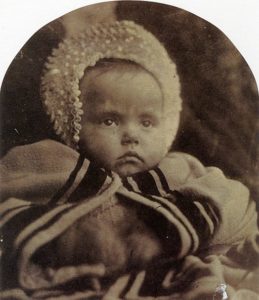by Tamara Wagner
The Victorian baby is generally thought of as a cliché, a useful icon of domesticity, an accessory in idealisations of motherhood, childhood, or the family. Once one takes a closer look, however, the baby of nineteenth-century popular culture emerges as a very volatile and flexible figure that appears in surprising forms and undertakes a range of narrative functions. The most provocative manifestation of odd literary babyhood in Victorian fiction is indisputably the sensational baby. Sensation novelists were aware of the controversial potential and often played out striking instances of incongruity, and yet the most revealing instances push the placements of infants in sensational scenarios beyond their usefulness as emblems of innocence that enhance – through sheer force of contrast – a sensational incursion into the domestic. Instead, babies are central to mysteries or import a potential threat. Wilkie Collins not only features infants in startling moments that play with the baby’s expected sentimentalisation; he challenges conventional representations of such controversial issues as illegitimacy, child-stealing, or adoption. In the process, he exposes the precariousness of childcare at a time when blended families were fairly common, but there was little to no legal protection for informally adopted or fostered children. He also interrogates normative conceptions of breastfeeding, for example, and in his early sensational novel Hide and Seek (1854), a clown’s wife offers to suckle a starving infant at the roadside, drawing attention to the wide variety of very visible breastfeeding scenes in Victorian literature. In his later novels, he explores the distress of birth mothers who have given up or lost their babies and creates one of the most explicit evocations of a baby-farmer in nineteenth-century fiction. Collins’s fictional babies indeed offer a compelling entry-point into a revealing re-examination of the ambiguities and contestations that lay underneath the Victorian iconography of babyhood.
Wagner, Tamara S. “Wilkie Collins’s Sensational Babies: Lost Mothers and Victorian Babyhood,” Victorian Review, vol 43, no 1, Spring 2017, pp. 129-142.
To read more, click here.

